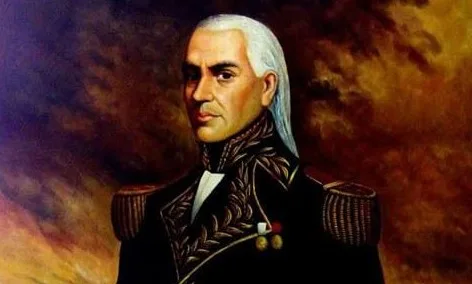The flag of the current Republic of Colombia was created on March 12, 1807 by the precursor of independence Francisco Miranda, and in 1834 it would be recognized by law of the National Congress.
And it is that what happened on July 20, 1810 in the house of José González Llorente, in Santafé -present-day Bogotá-, was the straw that broke the camel’s back for a sector of the Creole elite who had yearned, for a long time, to throw off the Spanish yoke and achieve equality between Americans and Spaniards.
Sebastián Francisco de Miranda y Rodríguez was born on March 28, 1750 in Caracas, Venezuela. Mestizo, he was the son of the Canarian merchant Sebastián de Miranda Ravelo and Francisca Antonia Rodríguez de Espinoza from Caracas. In 1762 he began studies of Latin minors, that is, grammar and Latin. Later he entered arts (high school) at the University of Caracas, finally enlisting in the Spanish army in 1771. He participated in the three great events of his time: the independence of the United States, the French revolution and the fight for Spanish-American freedom. Being one of the first to think about the existence of a united Greater Colombia, he is known as El Precursor.
It may interest you
As a member of the colonial army, during the war for the independence of the thirteen colonies, Miranda fought in the Battle of Pensacola (1781), where the English suffered a defeat. The United States gave him refuge when, in 1783, he was forced to leave his country: the Holy Office persecuted him, since he had in his library several of the “books prohibited” by this clerical institution. In 1785, he left America for Europe, where he traveled and lived until his return to Venezuela in 1810. Thanks to his diary we have multiple information about the Century of Enlightenment (18th century), he meticulously wrote all his impressions and activities as a traveler and researcher. Some London newspapers referred to him as: an enlightened and freedom-loving man from South America.
